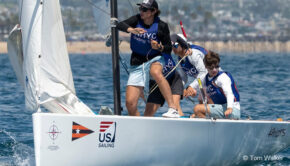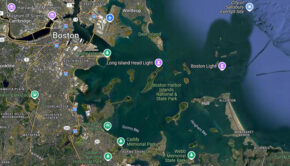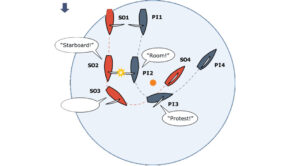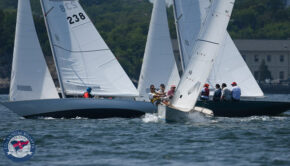Getting Millennials Hooked on Sailing
Published on April 6th, 2017
The millennial generation (those born roughly between 1981 and 1997) has surpassed the baby boomers (born 1946 to 1964) as the largest living generation, according to data from the U.S. Census Bureau.
So, it’s not surprising that businesses and organizations alike are looking more towards “Millennial Marketing,” a term that has become quite the buzz in marketing departments around the country.
At US Sailing’s National Sailing Programs Symposium in February in Austin, TX, Lynn Handy, Executive Director of Downtown Sailing Center in Baltimore, and Travis Lund, Executive Director of Treasure Island Sailing Center in San Francisco, presented “Five Strategies for Millennial Engagement in Sailing.”
With 72 percent of millennials preferring to spend their money on experiences rather than on materials things, sailing is a perfect fit. However, as Lynn noted, it’s getting them exposed to the sport that is the challenge.
“As a millennial, I knew that my generation of non-sailors was less likely to get into the sport through the traditional avenues,” Lynn said. “I had friends who admitted that it’s too much of a commitment and too much money to even consider it. If I wanted to increase my revenue and reach more customers, I would have to adjust my approach.”
The first strategy is accessibility. By offering discounts to new sailors, they can get a taste of spending time on the water. Lynn noted that she discounted one of the learn-to-sail programs in 2013 and that it sold out in less than two weeks. And, the program has been selling out ever since!
Additionally, to keep sailors engaged, new members of the Downtown Sailing Center receive a free three-hour learn-to-sail course. If sailors are not a member, they are encouraged to join by applying their learn-to-sail fees towards a new membership.
Group exposure is the second strategy that Lynn found to be successful. Using unique marketing avenues helps to get the word out about learn-to-sail opportunities. These include encouraging co-worker team-building activities, promoting networking opportunities and encouraging volunteer efforts.
Being open to new approaches to fit the unique needs of the millennial generation is also an important strategy. Lynn says that one of the reasons that the program at Downtown Sailing Center is so popular is because it’s designed to meet the unique needs of millennials. She said that not only do millennials love friend/group activities but that they also like personalization and diversification.
For example, instead of following the traditional racing rules of sailing, the coaches pick a buoy on the water and race around it, letting the sailors pull in sheets, steer and sail around Baltimore Harbor. Lynn says that the program at Downtown Sailing Center focuses on good times and good sunsets, providing an awesome sailing experience for everyone.
Next, creating partnerships to attract new sailors can be a successful tactic. After an invitation to join a bocce team in Baltimore, Lynn realized that if 50 millennials could be convinced to play bocce she could definitely get more people interested in sailing.
She decided to reach out to Baltimore Social, the company that organizes the bocce league, and asked if they’d be willing to partner on sailing experiences. They officially launched the partnership four years ago and it has been going strong ever since.
Lynn suggests reaching out to “experience economy” groups, such as running clubs, local parks and recreation departments, local gyms, non-profits and outside event venues.
The final strategy, which is becoming increasingly essential, is social media outreach. As noted in the presentation, nearly 69 percent of millennials experience Fear of Missing Out (FOMO). This encourages them to show up, share and engage, which is the driving force behind the “experience economy.”
“There is nothing like an Instagram picture of sailing on a harbor, which convinces other friends that they must try it,” Lynn said.
The learn-to-sail program at Downtown Sailing Center attracts 70 new people to join the sport each session. Lynn noted that the return rate is almost 10 percent, with at least six of them coming back to become a member or to take another class.
“When considering launching a new program at your facility, it’s important to consider the demographic,” Lynn said. “Your program might not be able to host a seven-night sailing league, but you could offer a learn-to-sail sunset group event, a scavenger hunt via sailboats, team building events and so much more. As we all know, sailing is an epic sport. We just need to convince those non-sailors to give it a try.”
Source: US Sailing









 We’ll keep your information safe.
We’ll keep your information safe.